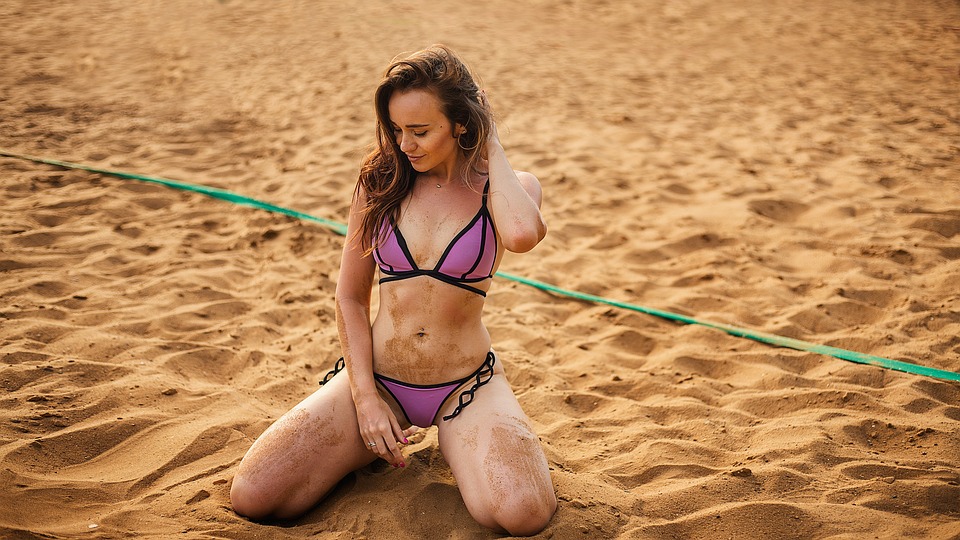Bikini Line Fungal Infection: Causes, Symptoms, Treatment, and Prevention
As summer approaches, women gear up to wear their favorite bikinis and swimsuits. However, with the rising heat and humidity, fungal infections on the bikini line can become a common problem. A fungal infection on the bikini line, also known as tinea cruris or jock itch, is a type of fungal infection that affects the skin in the groin area. In this article, we will discuss the causes, symptoms, treatment, and prevention of bikini line fungal infections.
Causes of Bikini Line Fungal Infection
Bikini line fungal infection is primarily caused by a fungal infection called dermatophytes. These fungi thrive in warm, moist areas, making the groin region an ideal environment for their growth. The infection can be caused by various factors, including:
Poor Hygiene
Poor hygiene can result in the accumulation of moisture and sweat in the groin area, which can lead to the growth of fungi. When the skin is not cleaned properly, it can become a breeding ground for bacteria and fungi, leading to an infection.
Tight Clothing
Wearing tight-fitting clothing can trap moisture and sweat in the groin area, leading to the growth of fungi. Tight clothing can rub against the skin, creating an environment where fungi can thrive.
Sharing Personal Items
Sharing personal items such as towels, clothing, and razors can also lead to the spread of fungal infections. Fungi can spread from one person to another through direct contact with infected items.
Symptoms of Bikini Line Fungal Infection
The symptoms of bikini line fungal infection can vary from person to person. Some common symptoms include:
Itching and Burning Sensation
The most common symptom of bikini line fungal infection is itching and burning in the affected area. The itching can be intense, and scratching can lead to the spread of the infection.
Red Rash
The infected area may develop a red rash that can be itchy and painful. The rash may be raised and have a scaly appearance.
Blisters and Pimples
In some cases, the infected area may develop blisters and pimples that can be painful and itchy.
Treatment of Bikini Line Fungal Infection
Bikini line fungal infection can be treated with antifungal medications. Over-the-counter creams and ointments can be applied to the affected area to relieve itching and promote healing. If the infection is severe, prescription medications may be required.
Antifungal Creams and Ointments
Antifungal creams and ointments are the most common treatment for bikini line fungal infection. These medications can be applied directly to the infected area and are effective in treating mild to moderate infections.
Prescription Medications
If the infection is severe, prescription medications may be required. These medications can be taken orally or applied topically and are more potent than over-the-counter medications.
Home Remedies
Home remedies such as tea tree oil, apple cider vinegar, and garlic can also be used to treat bikini line fungal infection. These remedies have antifungal properties that can help to relieve itching and promote healing.
Prevention of Bikini Line Fungal Infection
Bikini line fungal infection can be prevented by following some simple hygiene practices. Here are some tips to prevent bikini line fungal infection:
Maintain Good Hygiene
Maintaining good hygiene is crucial in preventing fungal infections. Keep the groin area clean and dry, and avoid wearing tight-fitting clothing.
Avoid Sharing Personal Items
Avoid sharing personal items such as towels, clothing, and razors to prevent the spread of fungal infections.
Wear Breathable Clothing
Wear loose-fitting, breathable clothing that allows air to circulate freely around the groin area. This will help to keep the area dry and prevent fungal growth.
Avoid Harsh Chemicals
Avoid using harsh chemicals on the groin area, such as scented soaps and perfumes. These can irritate the skin and create an environment where fungi can thrive.
Use Antifungal Powder
Using antifungal powder on the groin area can help to prevent fungal infections. The powder will absorb moisture and prevent the growth of fungi.
Conclusion
Bikini line fungal infection is a common problem that can be caused by various factors. Maintaining good hygiene, wearing breathable clothing, and avoiding sharing personal items can help to prevent the spread of fungal infections. If you experience symptoms of bikini line fungal infection, seek medical treatment immediately to prevent the infection from spreading and causing further complications.
Frequently Requested Questions About Bikini Line Fungal Infection
What is a Bikini Line Fungal Infection?
A Bikini Line Fungal Infection is a type of fungal infection that occurs in the groin area, particularly in the skin folds around the bikini line. This type of infection can cause redness, itching, and discomfort in the area.
The three most important information about Bikini Line Fungal Infection are:
– It is a type of fungal infection that occurs in the groin area
– It can cause redness, itching, and discomfort in the area
– It is more common in women than men
What are the symptoms of a Bikini Line Fungal Infection?
The symptoms of a Bikini Line Fungal Infection may include redness, itching, burning, and discomfort in the groin area. In some cases, the skin may also become dry and flaky, and small bumps or blisters may develop.
The three most important information about the symptoms of Bikini Line Fungal Infection are:
– Symptoms include redness, itching, burning, and discomfort in the groin area
– The skin may become dry and flaky
– Small bumps or blisters may develop
What causes a Bikini Line Fungal Infection?
A Bikini Line Fungal Infection is caused by a type of fungus called dermatophytes. These fungi thrive in warm, moist environments, such as the groin area, and can be spread through contact with infected surfaces or through skin-to-skin contact with an infected person.
The three most important information about the causes of Bikini Line Fungal Infection are:
– It is caused by a type of fungus called dermatophytes
– These fungi thrive in warm, moist environments
– It can be spread through contact with infected surfaces or through skin-to-skin contact with an infected person
How can a Bikini Line Fungal Infection be treated?
A Bikini Line Fungal Infection can be treated with antifungal medications, both topical and oral. Topical medications are applied directly to the affected area, while oral medications are taken by mouth. In addition, keeping the area clean and dry, wearing loose-fitting clothing, and avoiding tight clothing can help prevent the infection from spreading or recurring.
The three most important information about the treatment of Bikini Line Fungal Infection are:
– It can be treated with antifungal medications, both topical and oral
– Keeping the area clean and dry can help prevent the infection from spreading or recurring
– Wearing loose-fitting clothing and avoiding tight clothing can also help prevent the infection from spreading or recurring
How can a Bikini Line Fungal Infection be prevented?
A Bikini Line Fungal Infection can be prevented by practicing good hygiene, such as keeping the area clean and dry, wearing clean and dry clothing, and avoiding sharing towels or clothing with others. In addition, avoiding tight clothing and wearing breathable fabrics can help prevent the infection from occurring.
The three most important information about the prevention of Bikini Line Fungal Infection are:
– It can be prevented by practicing good hygiene
– Avoiding tight clothing and wearing breathable fabrics can help prevent the infection from occurring
– Sharing towels or clothing with others should be avoided
Introduction
Bikini line fungal infection is a common skin condition that affects many women worldwide. The infection is caused by a group of fungi known as dermatophytes that thrive in warm and moist environments. Although there is a lot of information available on this condition, there are still many misconceptions that people have about it. In this article, we will discuss some of the common misconceptions about bikini line fungal infection.
Misconception 1: It only affects women
One of the most common misconceptions about bikini line fungal infection is that it only affects women. However, this is not true as men can also get this infection. Men who shave their pubic hair are at a higher risk of getting the infection as shaving can create tiny cuts on the skin that provide an entry point for the fungi.
Misconception 2: It is caused by poor hygiene
Another common misconception about bikini line fungal infection is that it is caused by poor hygiene. While poor hygiene can contribute to the development of the infection, it is not the sole cause. Fungi thrive in warm and moist environments, so wearing tight-fitting clothes or sweating excessively can also lead to the development of the infection.
Misconception 3: It is a sexually transmitted infection
Many people believe that bikini line fungal infection is a sexually transmitted infection. However, this is not true. While it is possible to contract the infection through sexual contact, it is not classified as a sexually transmitted infection. The infection can be contracted through contact with infected clothing, towels, or other personal items.
Misconception 4: It is a serious medical condition
Bikini line fungal infection is often seen as a serious medical condition that requires urgent medical attention. However, this is not the case. While the infection can be uncomfortable and unsightly, it is not life-threatening and can be treated with over-the-counter antifungal creams.
Misconception 5: It can be cured overnight
Many people believe that bikini line fungal infection can be cured overnight with a single application of antifungal cream. However, this is not true. While antifungal creams can provide relief from the symptoms of the infection, it can take several weeks for the infection to clear up completely. It is important to continue using the cream as directed by the doctor to ensure that the infection is completely eradicated.
Conclusion
In conclusion, there are many misconceptions about bikini line fungal infection that need to be clarified. It is important to understand that the infection can affect both men and women, and it is not caused by poor hygiene alone. It is also not a sexually transmitted infection and can be treated with over-the-counter antifungal creams. However, it is important to continue using the cream as directed by the doctor to ensure that the infection is completely eradicated.
Bikini Line Fungal Infection
#Bikini #Line #Fungal #Infection


